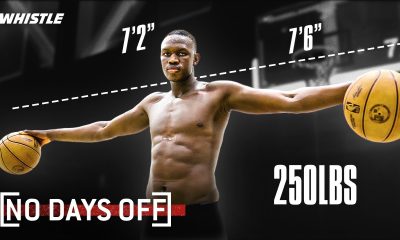NIL
Traveller Whiskey looking to stay in NASCAR



Duncan added: “We’ve been thrilled by the reception. It’s not only the coverage that we’re pleased with – it’s also the sentiment. … We were seeing stories of people bringing Traveller bottles to the pre-race events to be signed by Justin Allgaier or parts of (JRM’s) merchandise being sold out on the spot that weekend due to the fan excitement ….” But the brand was facing high comparisons back to its launch last year. Sazerac cautioned to SBJ that this was “not indicative of brand performance” because Nielsen only captures 30-40% of total market sales data, and only sales in the U.S. But he did say, “I think we’re looking at options. We’ve seen enough positive fan response from NASCAR to tell us that the NASCAR fan likes what Traveller Whiskey stands for and what we brought to the Daytona 500. As far as the actual how, like many of these things, it’s not a one-way decision; both sides have to be motivated to want to do well for the brand and we’ll find the right fit.”Sazerac is positioning Traveller as “the whiskey of America’s pastimes, simply put,” according to Duncan. The company has done ad buys during NFL and MLB games, and it activates around Stapleton’s tours and other concerts. Duncan wouldn’t disclose what Traveller’s next move in NASCAR will be, including whether with JR Motorsports or even possibly NASCAR Holdings itself. Traveller Whiskey wants to continue advertising to NASCAR’s fan base after the Daytona 500 and is in discussions about how to do so, after what it deemed to be a successful first foray into the sport. Traveller is part of the Kentucky-based Buffalo Trace Distillery, which is owned by the Sazerac holding company, and in February it helped fund the first Cup Series race for JR Motorsports, the team that Dale Earnhardt Jr. founded in 2002. Sazarec produced retail point-of-sale displays around the program that went out nationally. On top of sales, the company judged ROI by the number of in-store activations, how many media impressions it received, and the sentiment of those impressions. Among Sazerac’s sales team spread across the country, the point of sale displays found the most takers in Florida. According to JRM, the merchandise sales around the Traveller program were so successful that Allgaier is still the No. 1 Cup Series driver so far this year in that category on NASCAR.com despite the 500 being the only race he competed in at that level. Traveller’s diecast model car sales with NASCAR’s licensee in that category, Lionel, are projected to be in the Top 5 for this year, and E2 Apparel, a company that works with JRM, now counts the Traveller shirt it made as the No. 1 selling T-shirt it has produced since 2019.Traveller launched in January of last year, and Sazerac cited Nielsen data as showing the brand had more than M in off-premise sales in 2024 and established itself as the No. 1 item across the alcohol beverage category. Nielsen IQ data provided to SBJ by Bump Williams Consulting showed that Traveller’s sales were down 40% over the first eight weeks of 2025, while Florida was down 62% in off-premise and liquor channels combined. With usual Xfinity Series driver Justin Allgaier at the wheel, JRM’s No. 40 Chevrolet sponsored by Traveller finished 9th in the Great American Race, with the No. 40 on the race car used to match the Blend No. 40 of Traveller Whiskey that is sold in bottles. While not disclosing exact sales, Andrew Duncan, global brand director of American whiskey for Sazerac, said the return on investment from the NASCAR deal exceeded its expectations. The pact involved country music singer Chris Stapleton, who partnered with Buffalo Trace to launch Traveller in 2024 and set up the Daytona 500 opportunity with Earnhardt.
NIL
How historic $401 million donation to Michigan State helps Tom Izzo, Pat Fitzgerald
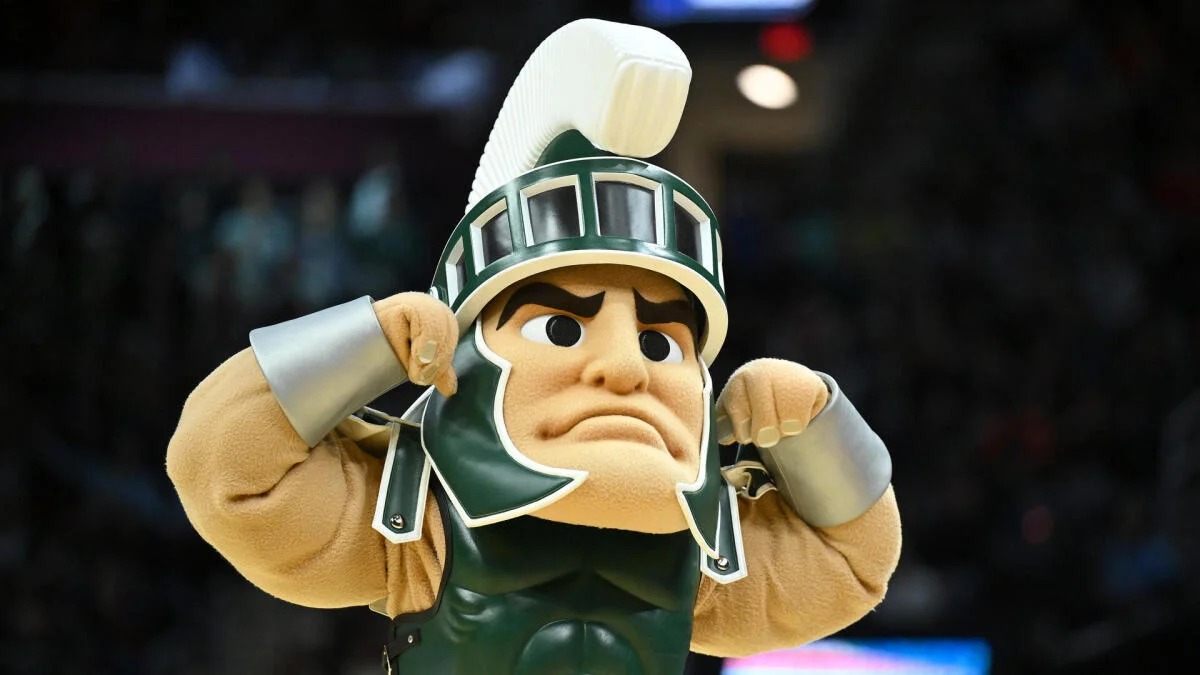
Michigan State is the latest school to receive a massive donation to its athletic department. Acrisure co-founder Greg Williams and his wife, Dawn, made a $401 million commitment with $290 million of that sum designated for MSU Athletics, the university announced Friday. It is the largest gift in school history and sets the Spartans up to be competitive in the revenue-sharing era of college sports.
The donation pushes Michigan State closer to the $1 billion goal associated with its athletics fundraising campaign. In an age where athletes can earn money directly from their school, financial support is as important as ever.
The cash influx also comes at a pivotal time for Michigan State, which just completed a football coaching change and seeks to reestablish itself as a Big Ten contender under Pat Fitzgerald. And while Tom Izzo said this spring that he has no plans to step away from the basketball court in the near future, the donation could help his eventual successor usher in a more modern recruiting approach.
Michigan State hires Pat Fitzgerald: Spartans act quickly for next coach after firing Jonathan Smith
Will Backus

“In today’s evolving college athletics landscape, this is a monumental day in the history of Michigan State Athletics,” Michigan State athletic director J Batt said. “Greg and Dawn’s commitment will provide the resources required for new levels of competitive excellence and student-athlete opportunities. We’re eternally grateful for their incredible generosity, dynamic leadership and trust.”
With the increased importance of athletic investment in the revenue-sharing era has come with a wave of historically large donations at numerous prominent universities. Kansas received a $300 million gift in August to fund its football stadium project and athletic programs, and Illinois secured a $100 million donation in September. Both are believed to be among the largest gifts ever given to college athletic departments.
A running start on roster construction for Pat Fitzgerald?
Michigan State’s football recruiting efforts took a dive during the two-year Jonathan Smith era but could rebound as a result of the coaching change and financial commitment. If the Spartans become more prominent players in the NIL and revenue-sharing world, Fitzgerald could attract more blue-chip talent to East Lansing than his predecessor, who never signed a class better than No. 42 in the 247Sports team recruiting rankings.
The Spartans this year posted their fourth consecutive losing record, marking the program’s worst stretch since 1979-83. The Big Ten is more competitive at the top now in the wake of conference expansion, and if Fitzgerald is to launch Michigan State into the league’s most elite tier, it will take work to climb out of the hole the Spartans dug to start the decade. Investment into the program should help in that regard.
Basketball program set for success in eventual post-Izzo era
Izzo, now 70 and in his 30th season on the job, is unabashedly committed to his principles, and while he says he is not opposed to change, his stances on the transfer portal and NIL are more conservative than some of his counterparts across college basketball. The more traditional approach works for Izzo, who won the Big Ten last year and appears this season to be poised for another run at the conference title and perhaps a Final Four.
Not everyone can win the way Izzo does, though. The Spartans have taken just seven transfers since 2019 and no more than three in a single cycle. Whenever he retires — and that day may not come for some time — his eventual successor will likely have to adopt a more modern recruiting strategy. That requires money, and lots of it. NIL and revenue-sharing budgets this season exceeded $10 million in the most extreme cases.
The Williams’ donation ensures that Michigan State basketball can spend with the richest programs in the country — if it wants to. That is a major win for Izzo’s successor, and perhaps Izzo will continue to adapt to the modern landscape and put the money to good use himself.
NIL
Georgia seeks over $300,000 in damages from Damon Wilson after transfer to Missouri

The Georgia athletic department seeks $390,000 in damages from former Bulldogs outside linebacker Damon Wilson II after his transfer last offseason to Missouri. Citing a clause in Wilson’s NIL contract, Georgia asked a judge to force Wilson to enter arbitration to settle the dispute. Legal documents show that Wilson was served a court summons last week in Missouri.
If the judge sides with Georgia, this could be a landmark case in college athletics. Georgia and other schools include clauses in their NIL contracts that equate to buyouts, and a ruling in the Bulldogs’ favor would set the precedent that such clauses are legally enforceable. Player buyouts could, in turn, become even more commonplace as schools seek to protect themselves financially from the perils of the transfer portal.
Wilson, a former top-50 recruit, spent the first two years of his college career at Georgia and developed into one of the most promising young edge rushers in the SEC. He inked a new deal with Georgia’s NIL collective in December 2024 but entered the transfer portal and moved to Missouri weeks later in January 2025.
While Georgia paid Wilson $30,000 under the terms of the new deal before his departure, the athletic department says Wilson owed a $390,000 lump sum within 30 days of his exit.
The contract was a 14-month agreement worth $500,000, which was set to be paid in monthly $30,000 increments. Georgia would have also paid Wilson two $40,000 retention bonuses at the end of the NCAA transfer portal windows. The exit clause states that Wilson would owe a lump-sum payment worth the total he would have received if he remained with the program through the duration of the contract.
The NIL collective signed the rights to the damages over to the athletic department on July 1.
“When the University of Georgia Athletic Association enters binding agreements with student-athletes, we honor our commitments and expect student-athletes to do the same,” Georgia spokesperson Steven Drummond said to ESPN.
Wilson was the No. 3 overall prospect and top-ranked edge rusher in the 2025 transfer portal cycle, per 247Sports. He delivered on expectations at Missouri this season with a team-high nine sacks and an interception.
This is among the first instances of a school publicly seeking NIL damages from a former player over a breach of contract. Arkansas’ NIL collective hired an attorney in April to pursue and enforce a buyout clause in former Razorbacks quarterback Madden Iamaleava’s agreement in what was, at the time, an unprecedented move. The Arkansas Edge collective also sought buyout money from former receiver Dazmin James.
NIL
Georgia seeks $390K from DE Damon Wilson for transfer damages
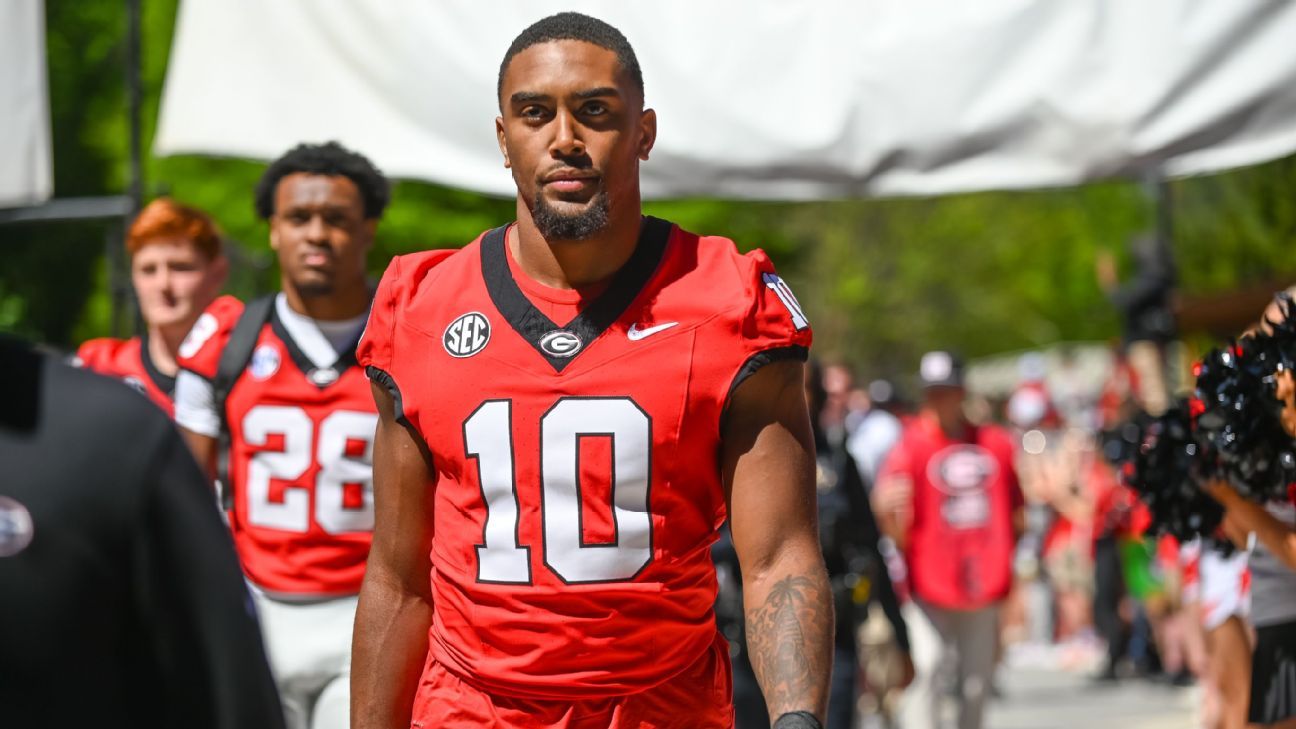
Georgia’s athletic department is headed to court to try to obtain $390,000 in damages from a former standout defensive end who transferred from the school after his sophomore season in a potentially precedent-setting case.
The Bulldogs have asked a judge to force former defensive end Damon Wilson, currently the top pass rusher on Missouri’s defensive line, to enter into arbitration to settle a clause in his former contract that serves effectively as a buyout fee for exiting his deal early. Wilson played for Georgia as a freshman and sophomore before transferring to Missouri in January, two weeks after signing a new deal with Georgia’s Classic City Collective.
Many schools and collectives have started to include “liquidated-damages” clauses in their contracts with athletes to protect their investment in players and deter transfers. Georgia is one of the first programs to publicly try to enforce the clause by filing suit against a player.
“When the University of Georgia Athletic Association enters binding agreements with student-athletes, we honor our commitments and expect student-athletes to do the same,” athletics spokesman Steven Drummond said in a statement to ESPN on Friday.
Multiple attempts to reach Wilson for comment through family members Friday were unsuccessful. Wilson was served last week in Missouri with a summons to appear in court, according to legal documents.
The Bulldogs paid Wilson a total of $30,000 from the disputed contract. Because of the way the deal was crafted, Georgia says Wilson owed it $390,000 in a lump sum within 30 days of his decision to leave the team. Drummond declined to comment when asked why the damages being sought are much higher than the amount Wilson was paid.
Wilson signed a term sheet with Classic City Collective in December 2024, shortly before Georgia lost in a quarterfinal playoff game to Notre Dame to end his sophomore season. The 14-month contract — which was attached to Georgia’s legal filing — was worth $500,000 to be distributed in monthly payments of $30,000 with two additional $40,000 bonus payments that would be paid shortly after the NCAA transfer portal windows closed.
The deal states that if Wilson withdrew from the Georgia team or entered the transfer portal he would owe the collective a lump-sum payment equal to the rest of the money he’d have received had he stayed for the length of the contract. (The two bonus payments apparently were not included in the damages calculation.) Classic City signed over the rights to those damages to Georgia’s athletic department July 1 when many schools took over player payments from their collectives.
Georgia’s filing claims Wilson received his first $30,000 payment Dec. 24, 2024. Less than two weeks later, he declared his plans to transfer.
Legal experts say Georgia’s attorneys will have to convince an arbitrator that $390,000 in damages is a reasonable assessment of the harm the athletic department suffered due to Wilson’s departure. Liquidated damages are not legally allowed to be used as punishment or primarily as an incentive to keep someone from breaking a contract.
In one of the only other examples of a school trying to enforce a similar clause, Arkansas’ NIL collective filed a complaint in the spring against quarterback Madden Iamaleava and wide receiver Dazmin James after both players transferred out of the program. It’s not clear if the Iamaleava case has been resolved. James’ attorney, Darren Heitner, told ESPN that the wide receiver “stood his ground” and that Arkansas has not moved forward to date with further attempts to collect damages.
“To me, [these clauses] are clearly penalty provisions masquerading as liquidated damages,” Heitner said.
Several attorneys who have reviewed athlete NIL contracts for ESPN in the past say they believe schools and their collectives are using liquidated-damages clauses in bad faith to punish players who break their contract early.
Schools and collectives have not used the negotiated buyout clauses that typically appear in coaching contracts for athletes because the teams aren’t technically paying them to play their sport. Instead, the school pays players for the right to use their name, image and likeness in promotional material. Paying for play could make it more likely that courts deem athletes to be employees, which almost all college sports leaders want to avoid.
Wilson’s case could help set a precedent on whether liquidated-damages clauses will serve as an effective, defensible substitute for more traditional buyout fees.
NIL
When it comes to college football recruiting, Black mothers might just determine the future of the sport
It’s early December and ‘tis the season for college recruiters to lay their football mack all the way down.
The NCAA early signing period, when many high school athletes commit to where they’ll play at the next level, ends today, and it’ll soon be followed by a contact period. That’s when college coaches and staff can reach out directly to athletes and their families urging, cajoling, perhaps even promising riches to young prospects, trying to convince them to bring their ball-playing talents to their college or university.
And to win at that game, recruiters often single one person out for concentrated attention: Black mothers.
It’s a tacitly understood feature of student-athlete recruitment that’s crucial to the process but rarely acknowledged, studied or celebrated publicly. While the role of every mom in recruitment decisions is intuitively important, it’s Black mothers specifically who the entire game of football might just hinge on, said Tracie Canada, whose book Tackling the Everyday: Race and Nation in Big-Time College Football has a chapter that examines the centrality of Black mothers to the sport.
“I think plenty of people write about coaches. I think plenty of people write about fathers. I think plenty of people write about the men that surround football because that is the expectation,” said Canada, a professor of cultural anthropology, gender and sexuality, and feminist studies at Duke University.
“And so I also think that it is important to say that it is not only men that are allowing this sport to continue. Mothers not only give bodies to the sport, they’re giving birth to these players. They are also caring for them in a way that is different from the other people around them.”
Black mothers perform a type of specialized labor when it comes to their football-playing sons, giving them outsized influence on decisions about football and life. That labor involves care and kinship around “their holistic lives rather than just their lives as football players,” Canada said. It includes helping them navigate a world beyond the football field in large Black and brown bodies that are often reflexively feared and historically politicized.
Upwards of 40 percent of all NCAA college football players are Black, so the numbers alone make Black women at least partial gatekeepers of the sport. And from concerns about CTE (chronic traumatic encephalopathy) to NIL (name, image, and likeness) to the backlashes over DEI (diversity, equity, and inclusion), Black moms are taking notes.
For the third installment of our Recruiting While Black series, Canada spoke with Andscape about the centrality of Black mothers in football recruitment and their broader impact on the sport.
This interview has been edited for length and clarity.
In Tackling the Everyday, you’ve said your chapter on Black mothers has really found an audience and resonated deeply with people. Talk about what led you to that chapter and that line of inquiry.
The fact that this is the chapter in my book that people ask me about the most, to me, is a sign I’m picking up on something that people are so aware of, but they don’t often see it. It’s not in literature. It’s not usually given space. I’m specifically interested in Black football players, and the players themselves are consistently referencing their moms, when there’s no reason to talk about them. This is referencing how outsized they are in their lives, just how big these figures are to them in the decisions that they’re making in their daily behaviors, in their interactions with people around them, and it has always been clear to me that mothers are an important part of this story.
Because I’m a Black woman anthropologist, and an ethnographer doing this work, and because I am a Black feminist, I’m attuned to particular relationships. I’m attuned thinking about Black women and how their care and kinship align in a particular space, and these aren’t usually the analytics that we think about in football.
So in what specific or outsized ways did you notice that care showing up?
If you go to a football game, you can always tell whose kid belongs to who because the moms are very loud, they’re supportive of their son in a particular way, even if they’re supportive of the entire team. There might be a nickname that they yell out. They might be saying, “That’s my son!” They’re the ones that are wearing the T-shirts that might have his face on it, that might have his number on it. They bring the signs, they have the cowbells in college. They’re the ones who organize who’s going to the game this week. They’re the ones doing that labor.
Then as I’m spending time with these Black players, their moms were always brought up, and this was not something that I was asking about. There were players who called their mom every day. There was a player who was super proud that his mom bought all of his clothes because she knew what he liked to wear, but also knew where she could shop for him, given his size. In my book, the chapter title, “The Year My Mom Was Born,” came from an offhand comment that somebody made about his jersey number making him feel close to his mom. So I’m seeing this physical presence in their son’s lives alongside a constant reference from players.
The other thing that I think is relevant is that people assume that the players I was spending time with were from single-parent homes. These are mothers who have been married for a long time, often to the fathers of their children and I always have to say, “These are not single moms that have to do everything on their own.” These sons have very present fathers in their lives, too. But I was noticing there’s a different relationship that comes from moms of football players than fathers of football players. Fathers seemed to be very invested in the football player himself — of how well he did, of how he can improve, of what’s physically going on during a game. Players will often reference their dads as the reason that they started playing in the first place.
The relationship to football often comes through their dads, but I think that they are sustained by their moms. The moms are the ones who are doing a certain type of labor so that the player feels supported. And the moms also seem to be invested in them as people. There’s something in how they are asking about their holistic lives rather than just their lives as football players.
I think that that’s important across the board. But the reason why the focus is specifically on Black moms is because demographically Black players are overrepresented in football. Especially if we look at a college campus versus a college football team, Black men are severely overrepresented. So for a lot of these guys, the women that are around are going to be Black women.
You referenced the quote,”If 10 percent of mothers in this country would begin to perceive football as a dangerous sport, that is the end of football,” attributed to an unnamed NFL doctor in response to the work of Dr. Bennet Omalu (a forensic pathologist whose discovery of Chronic Traumatic Encephalopathy caused wholesale changes in concussion protocols).
How should we think of that quote in terms of the ways Black women guide and care for their football-playing sons?
The way that I write about it, if I’m taking that quote seriously, is that if moms didn’t buy into the sport, the sport would go away. So that means Black women are playing a significant and really important role here.
There are the ones who say, “I will not allow my son to play at this school, to play for this coach, to be in this division if I don’t feel OK with where he is. Even if he wants to. If I don’t feel it, you cannot go there. I will not allow that to happen.” And I think that these moms recognize something about how important it is that these are young Black men who live in particular bodies. It’s a body that’s usually big and strong, visibly so, in a way that is transgressive and is often outside of the norm. And so these moms are also [thinking]: My son is in danger on this field, but my son is also in danger in the real world outside of it because of the body that he lives in, given this anti-Black world that we exist in.
The way that I analyze it is that moms are the ones that clock all of these angles for their Black sons in a way that doesn’t seem to be taken into account as obviously by other people.
Have football programs, institutions and administrations responded to or shown that they recognize the role of mothers and Black mothers, specifically? And if so, what are some examples of that?
I remember one of the first, very early on conversations I had with one of the coaches. It was camp time, the semester hadn’t started yet, and one of the things he said was about how they recruit moms, and how if they recruit a player, the mom can be a great spokesperson for the program. She can attract other moms to get on board, and they can use networks of moms to attract players.
At the time I was doing research, all of these NFL safety clinics were also happening, and these were different NFL teams inviting moms of young players. Not college, high school and lower. It wasn’t a parents’ clinic, it wasn’t even just an NFL clinic, it was specifically the NFL Moms Safety Clinic. What happens in football, but probably across sports, is that the professional league is making certain decisions and things usually trickle down to the lower levels. The NFL affects college, which is going to affect high school, which is going to affect Pee Wee, so I thought it was really interesting that the NFL was specifically marketing to moms and kind of putting its brand name behind the importance of this particular group of people.
These weren’t small events. For the two that I went to, you’ve got like 200 moms there and most of them are Black women.
So my question is, with all the structural changes going on in college football, like NIL and divisive political issues facing the nation, do you think we’ll see a significant recruiting impact from Black mothers’ advice and influence and if so, when?
Sports as an arena is notorious for attempting to claim that it is not political. Fans come from all different backgrounds and all different walks of life, but they come together to support a team. The assumption is the same for the players and the coaches. It’s this idea that the team, and what we’re doing here, is the most important thing right now, and we don’t care about all the other stuff that’s going on. That the playing field is completely divorced from the real world outside of it. As I’m sure you can tell, I don’t agree with that. I’m someone who talks about how race actually matters in this space.
One part of me would say 2025 is actually not all that different because these concerns have always been there for Black people. We are seeing things that are familiar because these things happen over and over again. What does it mean to walk through the world in a particular body? What does it mean to be an athlete who is stereotyped as someone who is only useful for what their body can do. These things are happening now, but they have also happened before, and will probably happen in the future.
If you’re talking about recruiting, what I imagine might be going on in this particular moment is probably part of the conversation that families are having. When you’re playing the sport of football, there is always calculus, an algorithm that is not specified, but there are a lot of factors at play here and how am I going to make the best educated, safe, hope-for-success decision, right? Football is already a dangerous sport, so part of the risk assessment is like should I play or should I not? What is my risk if I do it and what is my risk if I don’t? Do I play in this state? Do I play for this coach? Do I push for this position?
Part of that conversation could be that this state as a whole is doing X, Y, and Z [politically], but I have a good chance of going pro if I’m with this coach, at this university, with these other people there. Or it might be that because of the state that this university is located in, is it actually riskier for me to be there because of who I am, and because my options outside of sport are much more limited?
I’m very curious about how this moment is going to play out over the next five years, given everything that has happened politically, socially, culturally in this country in the past five years. The landscape of college sports has changed dramatically in the last five years when coaches and institutions thought it was important to take [performative] stands on issues. Taking a stand is always a recruiting and retention tactic to convince players to stay, to convince players to come.
What are Black mothers talking about in terms of their sons’ safety, on and off the field, and how do you think the impact of these conversations will be felt, especially on the rosters of schools in states where college football is most revered?
I’m spending time with high school moms right now, so it is interesting to see that what they are saying is not much different than all the things college moms had top of mind. It is about injuries. It’s about is my kid going to be taken care of? It’s about what kind of man is that coach and what kind of man is he going to encourage my son to be, right?
Black mothers are still going to be central to those decisions. Black moms are still paying attention. They’re taking notes. They are remembering these offhand comments that were made. They’re watching the news. They’re aware, but they’re also aware of what’s happening at their kids’ high school. They’re aware of what’s happening at the colleges that they’re looking at. They’re aware of what’s happening with the coaches at both of these places and what’s happening in the states where these schools are located, and how far away their kids are going to be away from them. These dynamics are always being taken into account by moms as they’re supporting their sons as they make these decisions about their future.
NIL
2026 football schedule change announced
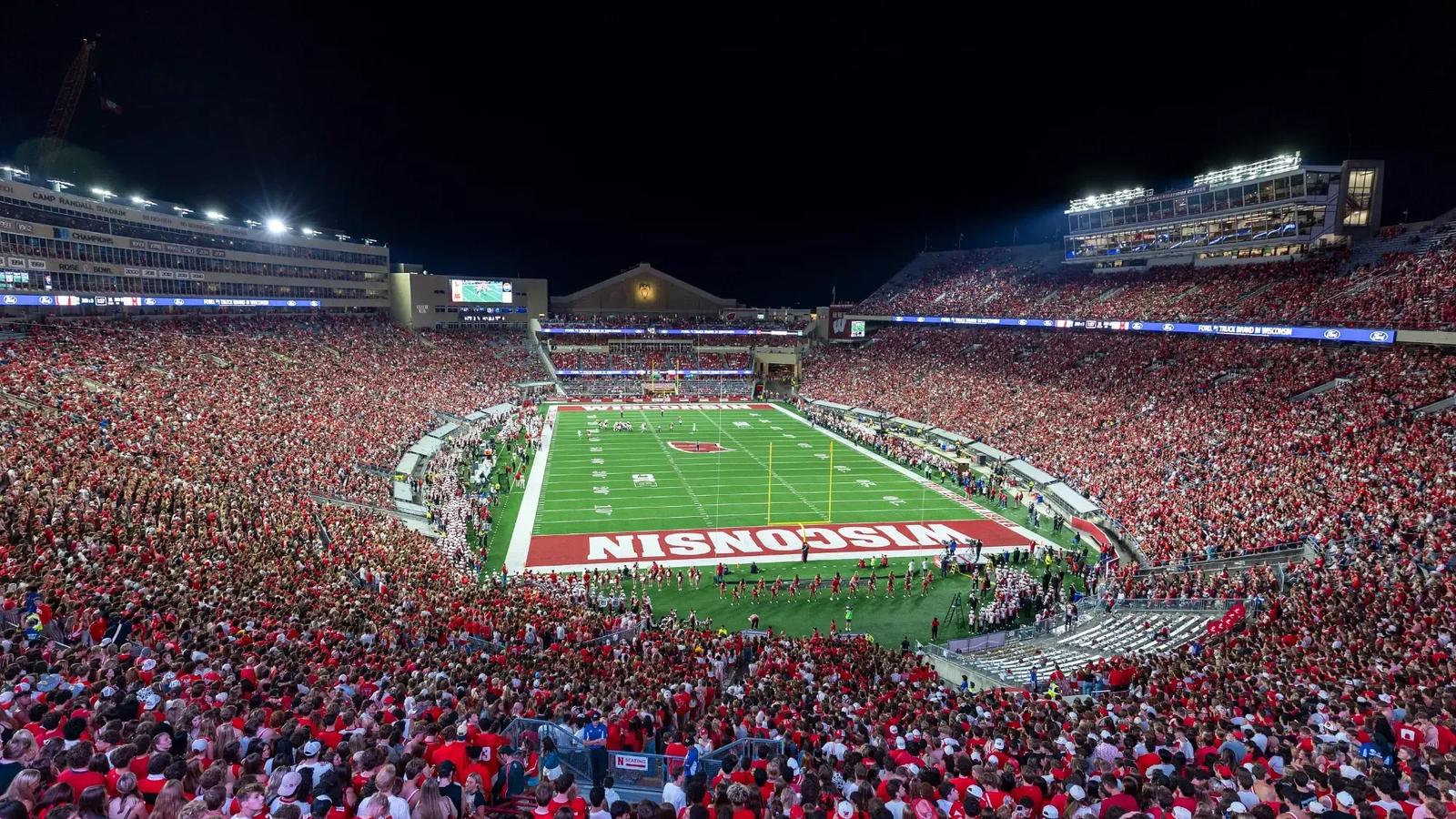
NIL
Major college football program jumps 96 spots in updated recruiting rankings
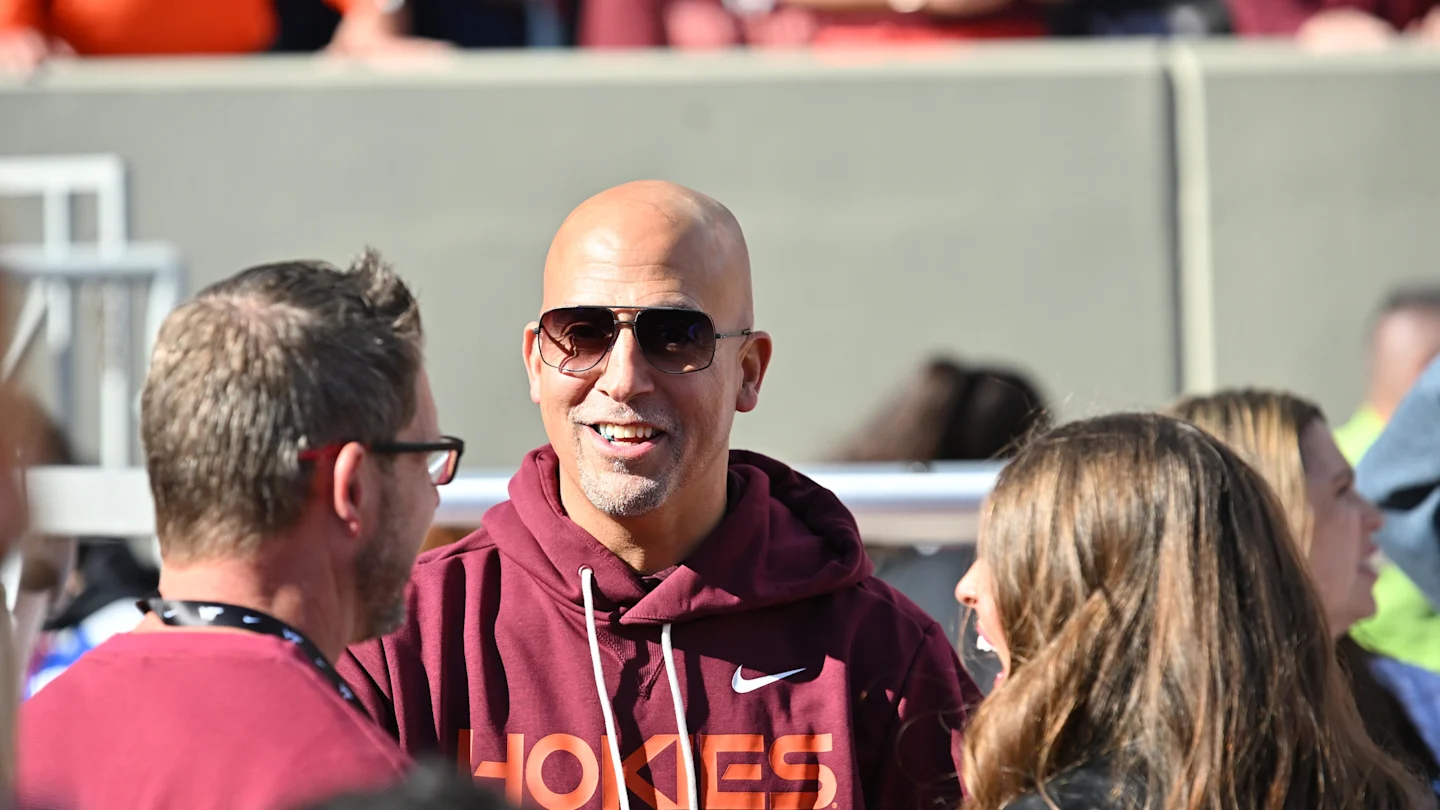
Blacksburg’s recruiting thermometer spiked within days of James Franklin’s arrival.
The former Penn State coach was introduced by Virginia Tech on November 17 after a 12-season run with the Nittany Lions that saw him win a Big Ten title, appear in the 2024 College Football Playoff semifinal, and leave with a 128-60 overall record.
In just over two weeks since taking the Hokies job, Franklin has already translated relationships and urgency into rapid sign-and-flip activity that dramatically improved the program’s industry rankings.
Industry trackers pegged Virginia Tech outside the top 100 (No. 121) on November 25; by Tuesday, the program had climbed up 96 spots to No. 25 after a string of commitments and flips, several of them former Penn State pledges.
Over a short window, Franklin and his staff flipped multiple four-star prospects, adding playmakers on both lines and at skill positions.
Some of the biggest moves include flipping six four-star recruits — LB Terry Wiggins, QB Troy Huhn, TE Pierce Petersohn, WR Davion Brown, OT Marlen Bright, and RB Messiah Mickens — all of whom decommitted from Penn State after Franklin’s firing.
That volume, not just a single headline recruit, is what pushed the Hokies up industry leaderboards.

Franklin’s early, unceremonious exit at 3-3 hasn’t disrupted his recruiting relationships.
For Virginia Tech, after a 3-9 season and a mid-season coaching change, the immediate priority was reestablishing connections and winning back recruits.
Franklin’s staff accomplished that quickly, which gives athletic directors, donors, and fans visible proof the program can compete for top regional talent again.
Virginia Tech’s 2026 schedule features home games against VMI, Old Dominion, and James Madison, along with a road test at Maryland before an ACC slate that features Clemson, Miami, NC State, Georgia Tech, Pittsburgh, Boston College, California, and Virginia.
If victories don’t come early, the recruiting spike risks fading before Franklin’s rebuild fully takes shape.
Read More at College Football HQ
- Nick Saban sends strong message on major SEC college football coach after taking new job
- $11.2 million college football coach signs extension amid departure rumors
- $29.6 million college football coach reportedly retires after seven seasons
- Major college football program set to make 29th straight bowl game appearance
-

 Rec Sports2 weeks ago
Rec Sports2 weeks agoFirst Tee Winter Registration is open
-

 Rec Sports1 week ago
Rec Sports1 week agoFargo girl, 13, dies after collapsing during school basketball game – Grand Forks Herald
-

 Motorsports1 week ago
Motorsports1 week agoCPG Brands Like Allegra Are Betting on F1 for the First Time
-
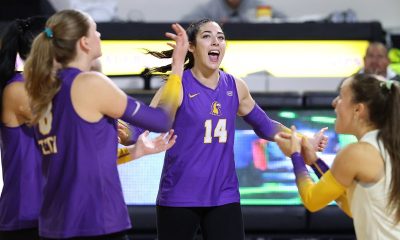
 Sports2 weeks ago
Sports2 weeks agoVolleyball Recaps – November 18
-

 Motorsports2 weeks ago
Motorsports2 weeks agoF1 Las Vegas: Verstappen win, Norris and Piastri DQ tighten 2025 title fight
-

 Sports1 week ago
Sports1 week agoTwo Pro Volleyball Leagues Serve Up Plans for Minnesota Teams
-

 Sports1 week ago
Sports1 week agoUtah State Announces 2025-26 Indoor Track & Field Schedule
-

 Sports1 week ago
Sports1 week agoSycamores unveil 2026 track and field schedule
-

 Sports1 week ago
Sports1 week agoTexas volleyball vs Kentucky game score: Live SEC tournament updates
-

 NIL5 days ago
NIL5 days agoBowl Projections: ESPN predicts 12-team College Football Playoff bracket, full bowl slate after Week 14
















